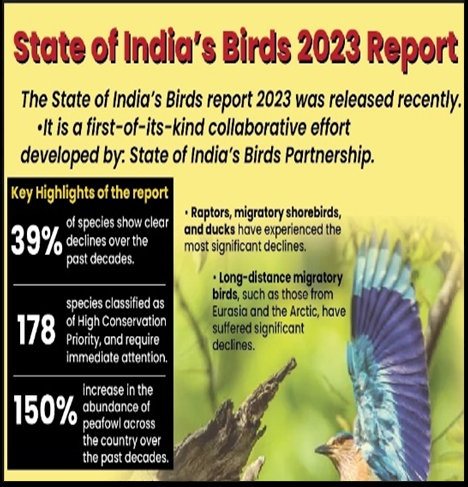KADALUNDI’S SHRINKING MUDFLAT ECOSYSTEM: A THREAT TO MIGRANT BIRDS
Why in the News?
- Kadalundi, a village in Kerala, once boasted 8 hectares of nutrient-rich mudflats, a haven for migratory shorebirds.
- However, over the years, this critical ecosystem has dwindled to a mere 1 hectare, now gradually succumbing to sand coverage.
Current Scenario:
- The shrinking mudflats of Kadalundi, once a haven for migratory shorebirds, are now encroached upon by sand, leaving the birds without their vital prey and putting their survival at risk..
Alarm Bells:
- Researchers emphasize that without immediate protection and restoration measures, Kadalundi risks losing its status as a prominent destination for migrant shorebirds within a decade.
- The prey-rich mudflats, home to polychaetes and crustaceans, serve as a crucial attraction for these migratory birds.
Government Response:
- Despite pleas to protect the mudflat ecosystem, the government has been slow to act.
- The threat primarily comes from invasive elements like sandbanks and mangroves.
Mangrove Expansion and Ecotourism:
- In contrast, the push for ecotourism in the Kadalundi-Vallikunnu Community Reserve involves the expansion of mangroves.
- While efforts are being made to promote ecotourism, the proliferation of mangroves poses a significant threat to the mudflats.
Carbon Sequestration Debate:
- The mangrove lobby defends its expansion by citing carbon sequestration
- However, researchers argue that the significance of soil and mud in carbon sequestration is often underestimated.
- Wetlands and grasslands, like the original mudflats, can outperform forests in carbon sequestration.
Holistic Approach Needed:
- Experts emphasize a holistic approach to preserve ecosystems and restore degraded ones.
- Haphazard tree planting without understanding ecosystem dynamics can have negative consequences.
Mudflats vs. Mangroves:
- Studies reveal that the mudflats, not mangroves, attract shorebirds.
- However, the depletion of prey due to sandbanks and mangrove proliferation is driving these birds away.
With the mudflats facing degradation, the once-abundant migratory birds are seeking alternatives on the beaches of neighbouring coasts, highlighting the urgency of conserving this unique ecosystem in Kadalungi.




